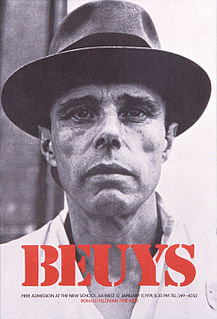 | |
| Designer | Helmut Bätzner |
|---|---|
| Date | 1964/66 |
| Materials | Fiberglass-reinforced polyester resin |
| Style / tradition | Modern classic |
| Sold by | Bofinger (Germany) |
| Height | 75 cm (30 in) Seat height: 44 cm (17 in) |
| Width | 53 centimetres (21 in) |
The Bofinger Chair, also named BA 1171, was designed by architect and designer Helmut Bätzner in 1964. In close co-operation with Bofinger company, situated in Ilsfeld in Baden-Württemberg/Germany, under owner and managing director Rudolf Baresel-Bofinger, the Bofinger stacking chair was developed into the first one-piece plastic chair worldwide in fibreglass- reinforced polyester to be mass-produced in one single pressing process over a steel mould. [1] The material was dyed all way through before being processed and available in a range of colours including white, yellow, black, red, blue, green, brown and orange. [2] In a long trial series the characteristic shape of the chair was found in regard to seating shape, maximum stability by smallest quantity of material used, required elasticity, stacking capability, and industrial mass-production. [3] The pressing process in the heated steel mould with a weight of approximately 11 tons lasted under five minutes and required as finishing treatment only simple scraping round the edges to remove excess polyester. [1]

Ilsfeld is a town in the district of Heilbronn in Baden-Württemberg in Germany, on the outer edge of the Stuttgart Metropolitan Region. In addition to the village of Ilsfeld proper, it includes the formerly independent settlements of Auenstein and Schozach and some hamlets. Formerly predominantly agricultural, it has become more commercially oriented since an autobahn exit was built in the 1950s. The village of Ilsfeld was largely destroyed by a fire in 1904, and was rebuilt with public buildings in a rustic Württemberg style with Jugendstil elements.

Polyester is a category of polymers that contain the ester functional group in their main chain. As a specific material, it most commonly refers to a type called polyethylene terephthalate (PET). Polyesters include naturally occurring chemicals, such as in the cutin of plant cuticles, as well as synthetics such as polybutyrate. Natural polyesters and a few synthetic ones are biodegradable, but most synthetic polyesters are not. The material is used extensively in clothing.
In 1966 the Bofinger Chair made its debut at the furniture fair in Cologne. [4] The same year it received the ‘Rosenthal-Studio’ Award in the presence of Chancellor Ludwig Erhard, Philipp Rosenthal und Walter Gropius. [1] The Bofinger Chair became a design icon of its time. In 1971 on the occasion of an art happening in Berlin twelve well-known artists - among those Joseph Beuys, Sigmar Polke, Günther Uecker, Wolf Vostell, and Stefan Wewerka – transformed the Bofinger stacking chair into an art object. [5] Museums, such as the Victoria & Albert Museum in London, the Centre Pompidou in Paris and the Vitra Design Museum in Weil am Rhein, included the Bofinger Chair in their collection. The Bofinger Chair is considered one of the most important classics of modern furniture design history. [6]

Ludwig Wilhelm Erhard was a German politician affiliated with the CDU and the second Chancellor of the Federal Republic of Germany from 1963 until 1966. He is often famed for leading German postwar economic reforms and economic recovery in his role as Minister of Economic Affairs under Chancellor Konrad Adenauer from 1949 to 1963. During that period he promoted the concept of the social market economy, on which Germany's economic policy in the 21st century continues to be based. In his tenure as chancellor, however, Erhard failed to win confidence in his handling of a budget deficit and his direction of foreign policy, and his popularity waned. He resigned his chancellorship on 1 December 1966.

Walter Adolph Georg Gropius was a German architect and founder of the Bauhaus School, who, along with Alvar Aalto, Ludwig Mies van der Rohe, Le Corbusier and Frank Lloyd Wright, is widely regarded as one of the pioneering masters of modernist architecture. Gropius was also a leading architect of the International Style.

Joseph Beuys was a German Fluxus, happening, and performance artist as well as a painter, sculptor, installation artist, graphic artist, art theorist, and pedagogue.













